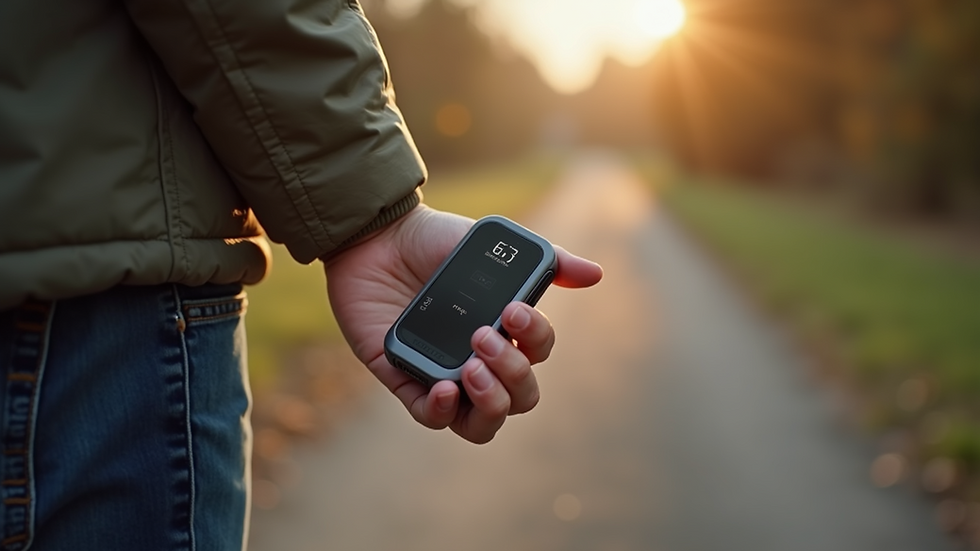How Technology is Revolutionizing Pet Recovery
- allpawsreunited
- Jul 26
- 4 min read
In a world where technology shapes our daily lives, it's no wonder that it's also making significant strides in pet recovery. Every year, millions of pets go missing. With advancements in tech, pet recovery methods are becoming faster, more reliable, and efficient. Let’s explore how technology is revolutionizing the way pet owners find their lost companions.
Innovative Solutions in Pet Recovery
When a pet goes missing, every second counts. Technology offers timely and effective solutions for pet recovery. GPS trackers are one of the most popular tools available today. These devices can be attached to your pet's collar and provide real-time location data, enabling owners to locate their pets quickly.
According to a study conducted by the American Society for the Prevention of Cruelty to Animals (ASPCA), microchipped pets are twice as likely to be recovered than those without microchips. This statistic emphasizes the importance of using technology to aid in pet recovery. Microchips are tiny devices implanted just beneath a pet's skin, and they contain information that can help reunite lost pets with their owners.

The Role of Social Media
Another technology-driven development in pet recovery is the use of social media. Platforms like Facebook, Twitter, and Instagram have changed how we share information about lost pets. Pet owners can post pictures and descriptions of their lost pets, reaching out to thousands of potential helpers in just minutes.
Local community groups and hashtags related to missing pets are especially effective. For example, if someone loses their cat in a city, posting in a local Facebook group can generate quick responses from neighbors who may have seen the pet. This community-driven effort can dramatically increase the chances of recovering a lost pet.

Advanced Technology and Pet Tracking
Technology has continued to evolve, providing innovative solutions for pet tracking beyond GPS systems. One of the cutting-edge options emerging in the pet recovery space is the use of drones. These devices can cover vast areas quickly and access locations that may be difficult to reach on foot.
Imagine a scenario where a pet goes missing in a large park. Using lost pet drones, volunteers can fly drones equipped with cameras to search for the missing pet from above, significantly speeding up the recovery process. This technique is especially useful in rural areas or disaster-stricken locations, where searching on the ground would be time-consuming and inefficient.

The Benefits of Pet Recovery Apps
In addition to social media, specialized pet recovery apps are gaining popularity among pet owners. These apps work similarly to social networks, allowing users to report lost pets, view local reports, and receive tips on what to do when a pet goes missing.
Some apps include features that allow users to create a lost pet alert that immediately notifies other users in the area. This instant communication can aid in recovering pets faster than traditional methods. Pet recovery apps often also contain resources about best practices to follow if a pet goes missing, increasing awareness among pet owners.
Community Efforts and Technological Integration
Tech-driven pet recovery methods don't work in isolation. Community involvement is vital to maximizing these technologies' effectiveness. Pet recovery organizations often use mobile applications and social media to coordinate community events, like search parties or educational drives on responsible pet ownership.
During these events, volunteers are trained to use technology effectively in search efforts. This collaborative approach creates a network of pet vigilant community members who work together, making lost pet recovery efforts more robust.
The Future of Pet Recovery Technology
The future of pet recovery looks promising as technology continues to evolve. We can expect to see improvements in artificial intelligence, machine learning, and even augmented reality that will enhance existing tools and introduce new features for pet management and recovery.
For example, AI could analyze patterns in lost pet reports to predict where missing pets might be found. Additionally, augmented reality apps may allow users to search their immediate environment for their pets using their smartphones in a more interactive way, unlocking new possibilities in the search process.
As technology continues to shape our lives, its impact on pet recovery will expand, making the process quicker, easier, and more efficient for pet owners everywhere.
In the modern age, there is no reason for any pet to remain lost for long. With the integration of technological advancements into the pet recovery process, pet owners can rest a little easier knowing they have the tools they need to find their lost furry friends.
Finding Your Lost Pet
While technology provides many solutions for recovering lost pets, it is essential to remember some traditional methods still play a critical role. Always spread the word in your neighborhood and post flyers in public places. Take the time to canvas your area, talking to local businesses and pet stores. The combination of technology and community effort creates a powerful force for pet recovery.
Keeping your pet safe involves being proactive. Using technology like microchips, GPS trackers, and engaging community resources can create a comprehensive safety net for your beloved animals. By integrating these modern methods into your pet care routine, you'll increase your chances of a quick recovery should your pet go missing.
Don’t wait for the worst to happen. Be proactive now. Your pets depend on you to provide them with a safe, loving environment.





Comments